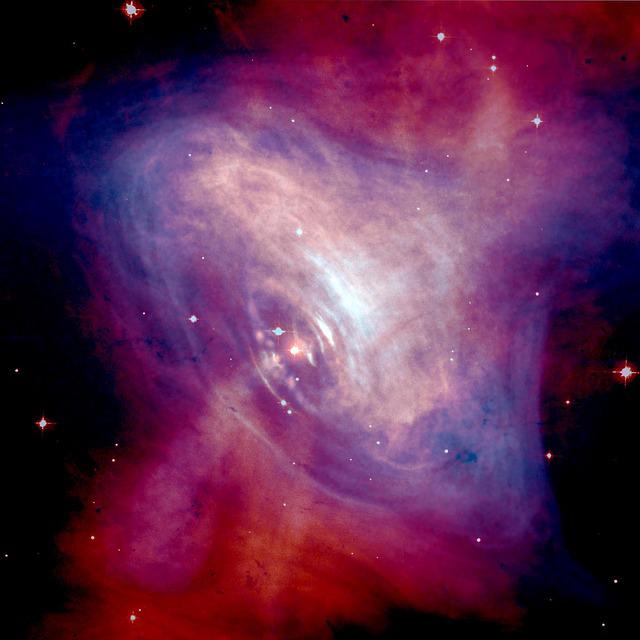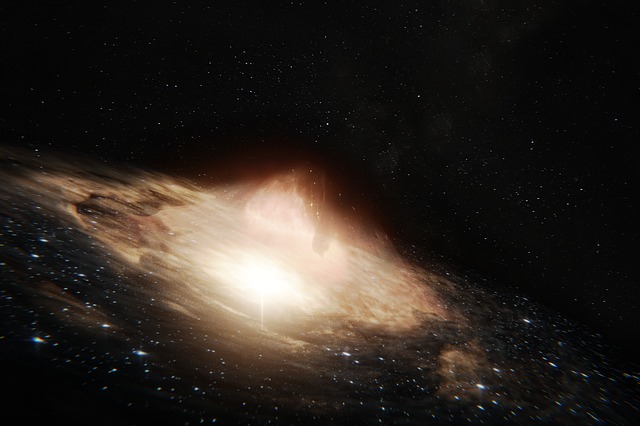*This post may contain affiliate links. This means we may make a commission if you purchase an item using one of our links*
A pulsar is a neutron star that emits light at regular intervals that form when a 8+ solar mass main sequence star or a 1.44 solar mass white dwarf star collapses leaving behind these densely packed entities whereas quasars are extremely bright celestial objects that are powered by supermassive black that shot extremely fast jet particles.
There are many other factors that separate the two so, continue reading to get a more detailed explanation of both celestial objects and what the other differences between a quasar and pulsar are.
What Is A Pulsar?
Table of Contents

One thing worth noting before delving into the specifics of a pulsar is that pulsars and neutron stars are one in the same. You could even go so far as to say that all pulsars are neutron stars but, not all neutron stars are pulsars.
In short, what differentiates neutron stars from a pulsar is down to how powerful their energy beams, magnetic field and rays are.
Just like any neutron star, pulsars are both very dense yet small, where they can range between the 20 – 25km in size yet have a mass that is 1.5 times that of the Sun.
These dense balls of neutrons are extremely fast rotating objects that emit regular pulses of radiation within the span of seconds and even in the lower millisecond range.
The reason pulsars flicker is due to the immense strength of their magnetic field, observed to be 10,000,000 T (teslas), which is a number so large that it can literally warp space and even dilate the time around them, like a black hole.
As the neutron star in this case rotates so quickly, it will open and accelerate charged particles at speeds so fast that 2 beams of extremely powerful electromagnetic waves will jet out from both its north and south magnetic axis.
This in turn means that a pulsar will be flickering or pulsating periodically where it will black out when pointing away from us and light up at the time the electromagnetic waves reach us.
If the neutron star was initially a part of a binary star system, it’s very likely that it’ll remain in orbit with the other star, using some of its energy and matter to oscillate at a much faster rate.
Overtime pulsars will slow down as a result of their surroundings but, the oscillation intervals will remain consistent throughout their lifespan.
Although pulsars make up the majority of neutron stars we’ve discovered and will typically emit radio ways, with the occasional gamma or x-ray that is discharged also, they aren’t the only neutron star sub type, where magnetars make up the extra powerful neutron star variants.
What Is A Quasar?

Quasars are extremely bright celestial objects powered by supermassive black holes, found in the center of galaxies. They tend also to be referred to as an active galactic nucleus or AGN for short.
Quasars were initially called quasi-stellar radio sources however, this name isn’t entirely consistent with the type of waves they generate as only around 10 percent of all quasars that have been discovered produce strong radio waves.
As for how bright they can be, quasars have been observed to exceed levels that are upwards of 100 times the brightness of the galaxies that hold them.
Although not an absolute, many scientists believe these bright objects are formed when light escapes at the edge of a supermassive black hole just before reaching its event horizon.
Some light gets drawn in whilst other particles jet out at a tremendous pace, which is how the erratic and powerful light of a quasar forms.
At this moment in time we have discovered roughly 750,000 unique quasars extending across various ages, with the farthest from us roughly 13 billion light years away.
Therefore, not only are these enigma’s extraordinarily powerful but, they can even be used as time capsules to observe how our universe came to be, relatively close to when the theorised big bang occurred.
Similarities Between Pulsars And Quasars
Pulsars and quasars are both entities that produce light, are very hot and can be observed from Earth. The average lifespan of both entities are similar too, falling around the 10 million year mark.
However, besides these relatively surface level points, they don’t have many real commonalities as they both fall under different cosmic entity brackets.
Differences Between Pulsars And Quasars
Pulsars and quasars are both completely different cosmic entities therefore, the differences between them are quite vast:
- Pulsars are solid objects made of neutrons compactly forming together whereas quasars are powered by the materials surrounding a supermassive black hole.
- Quasars are amongst the oldest objects we can observe as a result of their luminosity.
- Quasars are amongst the brightest objects in our universe whilst pulsars are quite dim due to their smaller size.
- Quasars encompass supermassive black holes that are much bigger than pulsars, which on average are around 20 – 25km in side. The largest supermassive black hole is said to be 176 billion km in diameter so, even if one was a fraction of this size, quasars would be far bigger than even the largest observed pulsar in the universe.
- Although pulsars are very hot at 600,000+ degrees celsius, quasars are in another league where they can reach a temperature of 100 billion degrees celsius.
- Quasars are not very common as only 2,000 have been observed in our universe whereas 3,000+ pulsars have been observed in the Milky Way alone let alone in all the other millions of galaxies.
- Pulsars emit light and radio waves at Earth in regular intervals whilst quasars are a constant brightness and do not pulsate.
- Pulsars have a smooth surface whereas quasars are not solid therefore cannot have a surface.
- Pulsars are extremely dense balls of neutrons that can dilate time by around 30%. Quasars are unable to dilate time or have not shown to do so based on their red shift.
- Pulsars are formed when a large star reaches the end of its active lifespans, explodes via a supernova and condenses itself into their comparatively small stature. Quasars do not go through this but, do use the excess material around a supermassive black hole to form.
Summary
Pulsars are smooth spinning dead stars that were unable to become black holes due to the lack of materials whereas quasars are formed when supermassive black holes have an excess amount of material around them that produces energy and light far exceeding almost everything surrounding them.
The two are simply very different from one another in size, energy and even how they’re formed.

